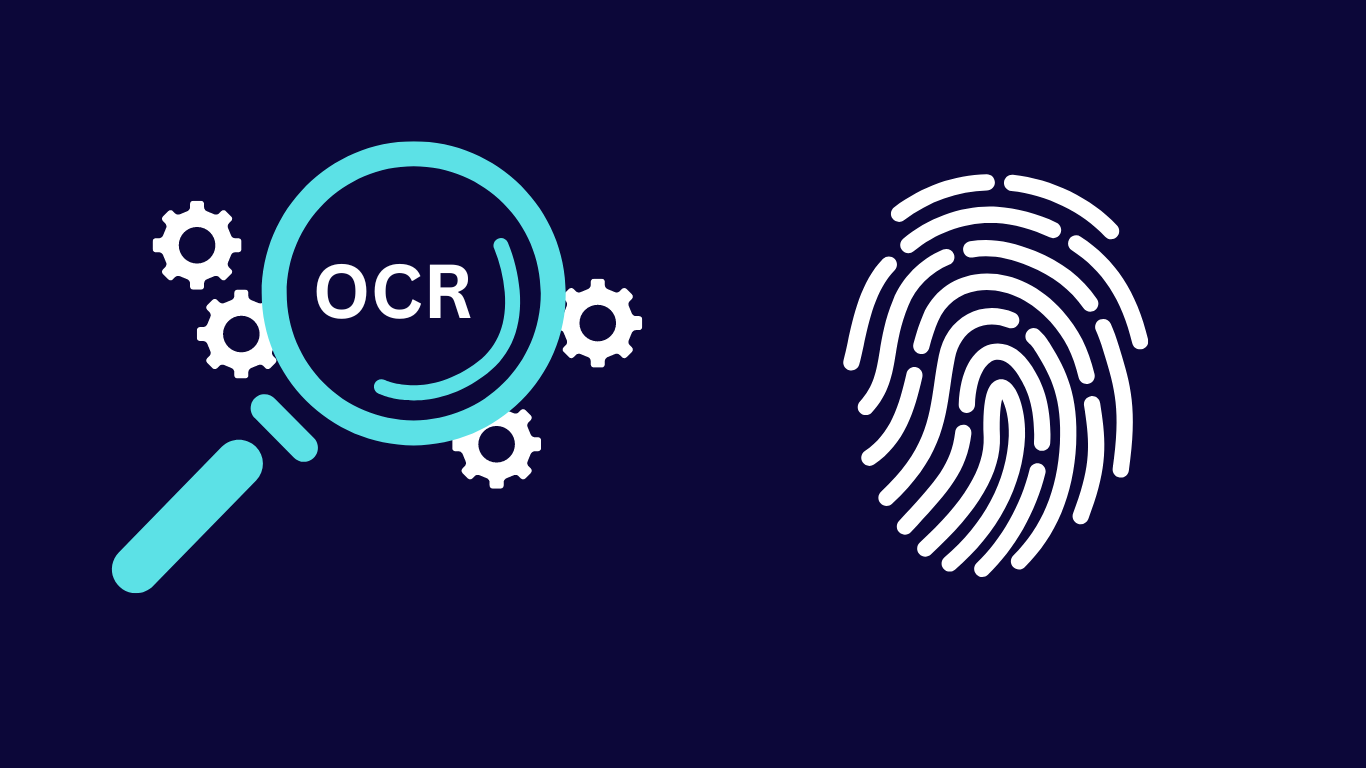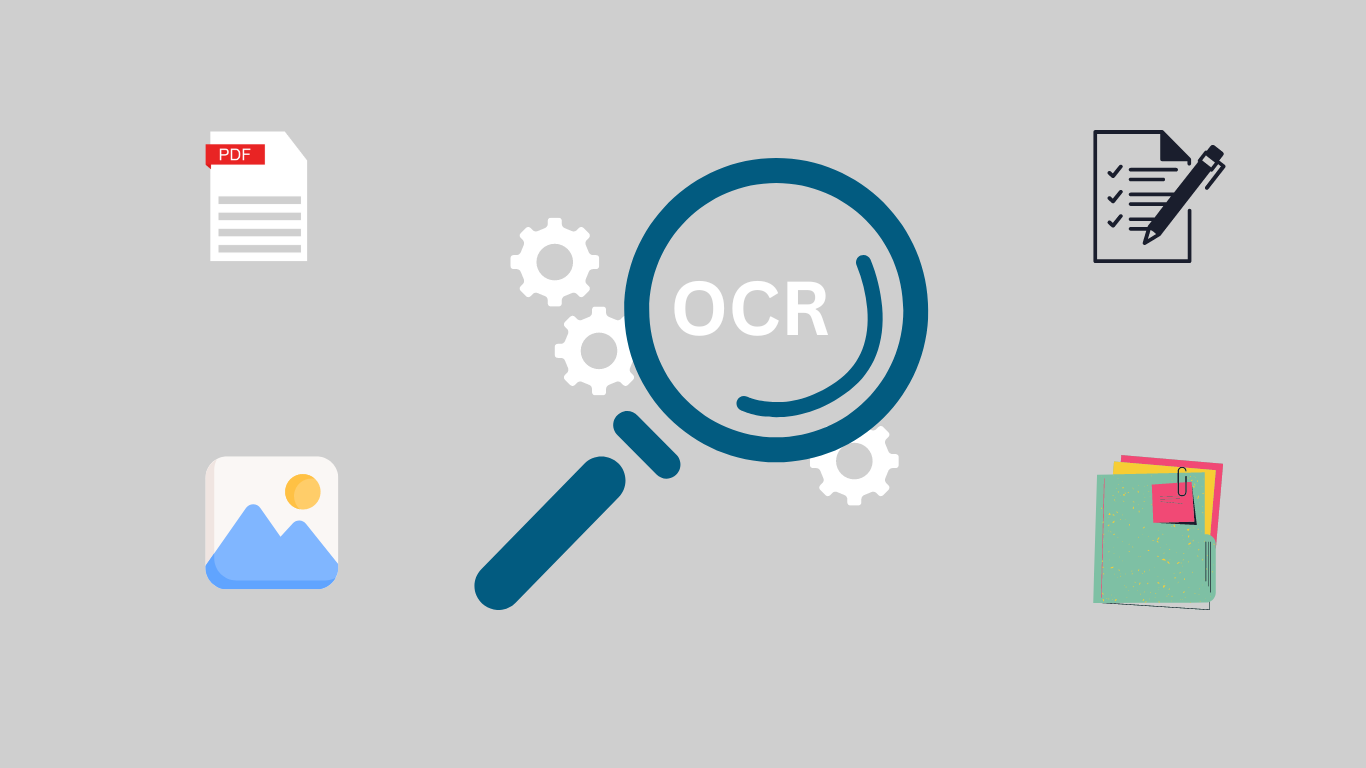OCR data extraction involves extracting text from scanned documents and text images. These include financial documents, ID cards, passports, medical records, and more. Since these documents contain personally identifiable information (PII), securing OCR data extraction is imperative. Moreover, depending on the country you’re operating in, you may be bound by regulations like GDPR or CCPA to ensure data security. This is where biometrics identification can be beneficial.
Biometrics identification involves confirming the identity of a person through fingerprints, facial recognition or iris scanning. It can serve as a powerful technology to secure OCR-based data extraction security.
If you’re an Angular developer looking to secure your OCR data extraction functionality, this guide is for you. In this guide, we’ll explore how integrating biometric identification with OCR (Optical Character Recognition) can create a powerful system for robust security.
Enhancing OCR with biometric identification in Angular applications

Security enhancement
Integrating biometric identification with OCR-based data extraction adds an extra layer of security. This integration in Angular apps can significantly enhance access control, identity verification, and authentication processes.
For example, the healthcare industry utilizes OCR to extract extra data from patient records and automate data entry. This digitization of patients’ documents helps improve patient care and streamline administrative processes. By integrating biometric identification, healthcare institutions can ensure the security of sensitive medical information.
Improved verification processes
Integrating biometrics with OCR has significantly enhanced the verification processes in various sectors. These include healthcare, finance, government services, etc.
For instance, the combination has strengthened the security process at airports. OCR is used to accurately extract information from documents like passports, visas, or ID cards. This data can include the traveler’s name, date of birth, passport number, and ID number. This information helps verify a person’s identity. Moreover, biometrics is used to confirm the identity of a person through their fingerprints or facial detection.
Thus, by combining OCR with facial recognition, airport security systems implement a multi-layered authentication process. This process significantly enhances security and reduces the risk of fraudulent activities, such as identity theft or document forgery.
Similarly, the banking/finance sector can utilize biometrics and OCR to prevent fraud. For instance, a fraudster can get access to a genuine customer’s checkbook and forge their signature. While the OCR will extract the person’s signature accurately, biometric authentication can prevent unauthorized transactions by confirming the identity through fingerprints or facial detection. This means even if OCR successfully extracts accurate data from forged or stolen documents, biometric authentication helps detect and prevent fraudulent activities.
Automation and efficiency
Another benefit of integrating OCR with biometric identification is that it automates and speeds up the authentication process. The manual verification process is time-consuming and prone to human error. This results in delays and inefficiencies.
Users can quickly authenticate themselves using biometrics, while OCR extracts relevant information from documents in real time.
Take, for example, a personal finance management app. Users can scan their receipts using OCR. They can then authenticate transactions using fingerprint or facial recognition. This automation reduces the need for manual data entry and verification. Thus, it saves time and enhances the user experience.
Choosing OCR and biometric solutions
When choosing an OCR software solution and a biometric solution for your Angular app, consider the following factors can help:
- Assess the OCR solution’s ability to extract data with high accuracy. Consider factors like algorithms used by the OCR engine (such as ML-based feature detection), its ability to handle a diverse range of fonts and complex documents efficiently, etc.
- Assess the processing speed of the OCR engine.
- Choose a scalable OCR solution.
- Assess the accuracy of the biometric solution.
- Check whether the biometrics solution supports the features you need. These can include fingerprints or facial detection.
- Evaluate the security of the OCR and biometric solutions.
Also read: Filestack OCR Guide for Text Extraction & Recognition.
Popular OCR and biometrics technologies for Angular
OCR solutions for Angular

Tesseract.js
Tesseract.js is one of the most popular options when it comes to OCR for Angular. It is an open-source OCR library for JavaScript to perform data extraction from text images or documents. Essentially, Tesseract.js supports functionalities to process images and recognize text content. It provides the extracted text in a machine-readable format.
Tesseract.js is easy to integrate into JavaScript/Angular apps. Moreover, it utilizes the Tesseract OCR engine, which is widely recognized for its high accuracy.
AWS Textract
AWS Textract is a fully managed OCR service by Amazon Web Services (AWS). It leverages machine learning algorithms to extract text and data automatically from:
- Scanned documents
- PDFs
- Scanned images
You can integrate AWS Textract into Angular apps by using AWS SDK for JavaScript.
Biometric solutions
Crossmatch DigitalPersona SDK
Crossmatch DigitalPersona provides a U.are.U SDK. The SDK enables developers to add fingerprint capture and recognition capabilities to their apps. Crossmatch also offers a JavaScript API to integrate fingerprint identification into web apps. Apps can get fingerprint data from a compatible fingerprint reader connected to the user’s device.
Here are the key features of Crossmatch DigitalPersona SDK
- Supports automatic 1-to-many fingerprint identification
- Support various data formats, including an ISO fingerprint
Microsoft Azure Face API
Microsoft Azure Face API is a cloud-based facial detection and recognition service provided by Microsoft Azure. It allows you to detect, identify, and compare faces in images or videos, enabling biometric authentication based on facial features.
Filestack: A cloud-based solution
You can also utilize a cloud-based solution like Filestack to streamline your file management, delivery, image processing, and OCR processes. Filestack offers a diverse range of powerful tools and APIs for:
- File uploads
- File delivery through CDN
- Image processing and transformation
- OCR, facial detection, object recognition, and more.
Filestack also offers a specialized Angular SDK, which is updated for Angular 14. This enables developers to integrate Filestack service and functionality into their Angular apps seamlessly. “filestack-angular” is essentially a wrapper on filestack-js SDK. The Angular component supports almost everything that the filestack-js supports.
Filestack OCR
Filestack offers robust OCR capabilities as a part of its intelligence services. You can use the OCR via Filestack processing API.
Filestack’s OCR is powered by advanced machine learning models and neural networks to recognize and extract text with high accuracy. It has an advanced digital image analysis system, and it accurately detects features character by character. Additionally, Filestack OCR leverages sophisticated document detection and pre-processing solutions. This enables it to detect complex documents, including rotated, folded, and wrinkled documents.
The illustration below shows how Filestack OCR works:
Advanced image processing
Filestack supports a wide range of advanced image processing and enhancement techniques. These include:
- Image transformation, such as cropping, rotating, resizing, compression, and more.
- Various image filters and enhancements
- Facial recognition can be used as the foundation for building your own biometric verification systems.
Filestack preprocessing features can be used to enhance the images and improve the accuracy of OCR and biometric analysis. Moreover, Filestack utilizes a robust CDN to deliver images quickly and efficiently to users worldwide.
Filestack Security
Filestack implements robust security mechanisms to ensure your data is always secure and protected. Here are Filestack’s key security features:
- Filestack implements end-to-end encryption to encrypt data throughout its entire lifecycle.
- It adheres to GDPR.
- Filestack employs powerful authentication and authorization mechanisms for API calls. This ensures secure access to its services.
- Filestack employs “signature” and “policy” to enhance OCR security.
- It implements HTTPS encryption for its processing API.
Integrating OCR and biometrics into Angular applications
- Integrate an OCR library or API such as Tesseract.js or Filestack OCR into your Angular app.
- Configure the OCR library to pre-process images and extract required text from specified regions of interest.
- Implement core logic to extract text from images using the OCR library.
- Handle text extraction errors or inconsistencies efficiently. Provide feedback to users if text recognition fails.
- Integrate biometric functionality into your Angular app using a biometric API or library.
- data, such as fingerprints or facial images, from users.
- If you’re creating biometric functionality from scratch, implement biometric matching algorithms to compare captured biometric data (fingerprints or facial detection) against stored biometric templates.
Code snippets
Here, we’ll show you how to integrate Filestack File uploader in Angular apps and use Filestack OCR.
Install Filestack SDK:
npm install filestack-js
npm install @filestack/angularInclude FilestackModule in app.module.ts:
import { BrowserModule } from '@angular/platform-browser';
import { NgModule } from '@angular/core';
import { AppComponent } from './app.component';
import { FilestackModule } from '@filestack/angular';
@NgModule({
declarations: [
AppComponent ],
imports: [
BrowserModule,
FilestackModule.forRoot({ apikey: YOUR_APIKEY, options: ClientConfig })
],
bootstrap: [AppComponent] }) export class AppModule {}Use in .html file:
<ng-picker-overlay
apikey="YOUR_API_KEY">
</ng-picker-overlay>You can then perform OCR on uploaded images using the following CDN URL:
https://cdn.filestackcontent.com/security=p:<POLICY>,s:<SIGNATURE>/ocr/<HANDLE>You can also integrate an OCR library with a biometric module within an Angular component.
Here is an example of how Filestack OCR data extraction works:
Input image:

Output:

Building scalable and secure applications with Angular
- Leverage Angular’s component-based architecture to create modular and reusable components for image and document processing, OCR, and biometrics tasks.
- Implement lazy loading to load Angular modules and components dynamically as needed.
- Manage the app state efficiently. This is especially important for complex workflows and high-volume data processing tasks. You can utilize state management libraries like NgRx or Akita for efficient state management.
- Implement security best practices to safeguard sensitive data. These can include HTTPS for secure communication, data encryption, and proper authentication and authorization mechanisms for access control. This is especially crucial for OCR and biometric workflows as they deal with personally identifiable information.
- Implement robust error handling mechanisms to handle errors efficiently.
Conclusion
OCR data extraction involves extracting textual information or structured data from documents, such as financial documents, ID cards, and passports. This extracted data is often used for identification verification. However, this process can be at risk from fraudulent activities like forged documents or stolen identities. Fortunately, we can enhance the security of OCR data extraction with biometrics integration. This will ensure that even if OCR extracts information from stolen or forged documents accurately, biometric authentication will detect and prevent fraudulent activities.
Sign up for Filestack and leverage its OCR today for your business!
FAQs
What is the meaning of OCR extraction?
OCR data extraction means extracting text from scanned documents (printed or handwritten) and text images automatically.
What is the difference between data extraction and OCR?
In traditional data extraction, a person extracts information from documents manually. OCR automates this process using AI and ML-based feature extraction and text recognition algorithms.
How can OCR and biometrics improve the identity verification process?
The combination of biometrics identification and OCR data extraction can significantly enhance identity verification and business processes. OCR data capture can be used to verify identity from a scanned document like a passport or ID card. Biometrics confirms the identity of a person through fingerprints or facial detection. This adds a multi-factor authentication mechanism.
Sidra is an experienced technical writer with a solid understanding of web development, APIs, AI, IoT, and related technologies. She is always eager to learn new skills and technologies.
Read More →

